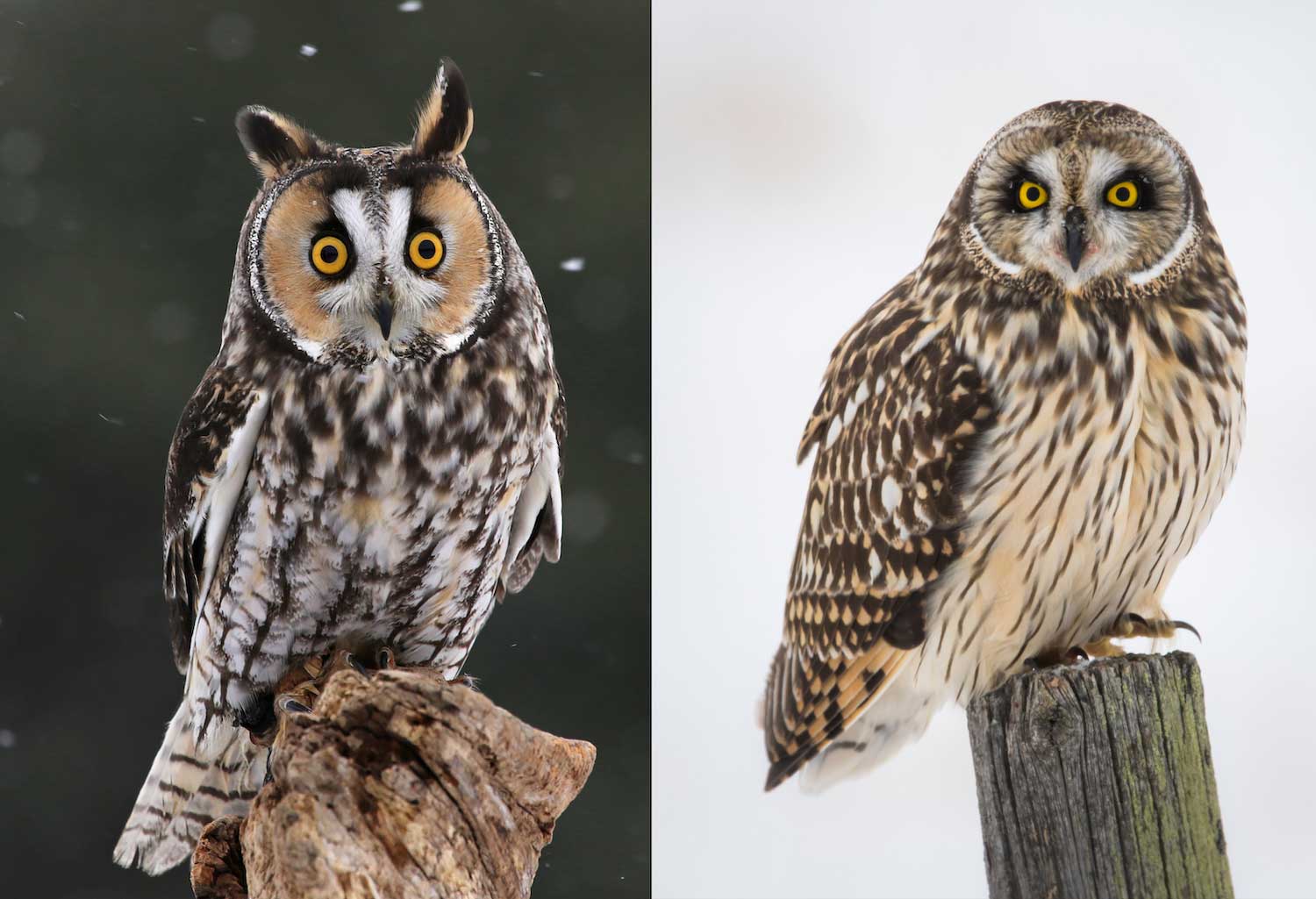What's the difference: long-eared owl vs. short-eared owl

When we think of owls, a particular image may come to mind. For many people it's probably the image of a great horned owl, the most common and well-known owl species around. But not all owls are big like great horned owls. Some, like the northern saw-whet owl, are closer in size to a robin than a great horned owl. And they don't all have the familiar dark plumage of the great horned owl. Consider snowy white owls, which can be almost entirely white.
That mental image you conjure up when you think of owls is a pretty good representation of some of our local owls, however, including both the short-eared owl and the long-eared owl. These two species both bear a resemblance to the great horned owl, although there are key characteristics to look for to tell them apart both from the great horned owl and from each other.
Quite obviously, one key difference between the short-eared owl and the long-eared owl is the size of their ears. In reality, those ears aren't really ears at all. They are simply tufts of feathers located where you might expect to find their ears. Long-eared owls have prominent tufts, called plumicorns, that stick up from either side of their heads, just above their eyes, according to the Cornell Lab of Ornithology. A short-eared owl's plumicorns are much less prominent. They are often so short they are hard to even see on top of their heads.
While their "ears" aren't much of an identifying feature for short-eared owls, their eyes can be useful identifiers. Like many owls, short-eared owls have bright yellow eyes, but the outside of their eyes is ringed in black, the Cornell Lab reports. While long-eared also have yellow eyes ringed in black, the rings around a short-eared owl's eyes are more prominent than those of a long-eared owl. In addition, short-eared owls' eyes also are in contrast to their pale faces, which are ringed in white. Long-eared owls have darker faces that are mostly orangish-brown in color.
Both long-eared owls and short-eared owls are considered medium-sized owls, smaller than a great horned owl but larger than screech owls. Short-eared owls are the larger of the two, but only marginally so. They can stand between 13 inches and 17 inches tall and generally weigh between a half-pound and a pound, the Cornell Lab reports. Long-eared owls are a little shorter and more lightweight.
Of short-eared and long-eared owls, it's the long-eared owls that are most similar in appearance to the familiar great horned owls. Long-eared owls have larger ear tufts, while great horned owls are generally larger and more bulky, Cornell Lab reports. Long-eared owls also have more broad and brightly colored facial disks.
Neither the short-eared owl nor the long-eared owl is common in Illinois. In fact, the short-eared owl is on the Illinois endangered species list. The time of year when you spot one of these owls can be a clue as to which species is in your midst. While short-eared owls are uncommon, they do nest in Illinois and can be found in the state year-round, according to the Illinois Department of Natural Resources. Long-eared owls are typically only in Illinois in the winter, migrating here from their breeding ground in the far northern United States and Canada.
Habitat can also be an identifying clue. Short-eared owls prefer large, open areas like prairies, meadows, grasslands, dunes and tundra, the Cornell Lab reports. They nest on the ground, in grasses and other plants. Long-eared owls are more of a forest bird, roosting and nesting in trees, but they forage for food over open areas.
Like all owls, short-eared owls and long-eared owls are carnivores, and they both mostly eat small mammals. Both will also sometimes eat smaller birds, Cornell Lab reports.
